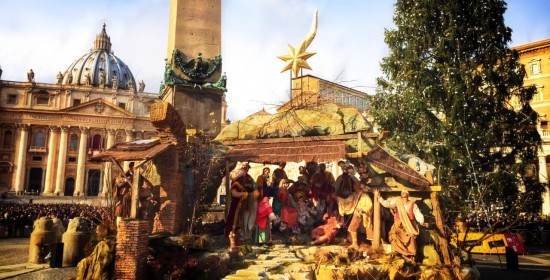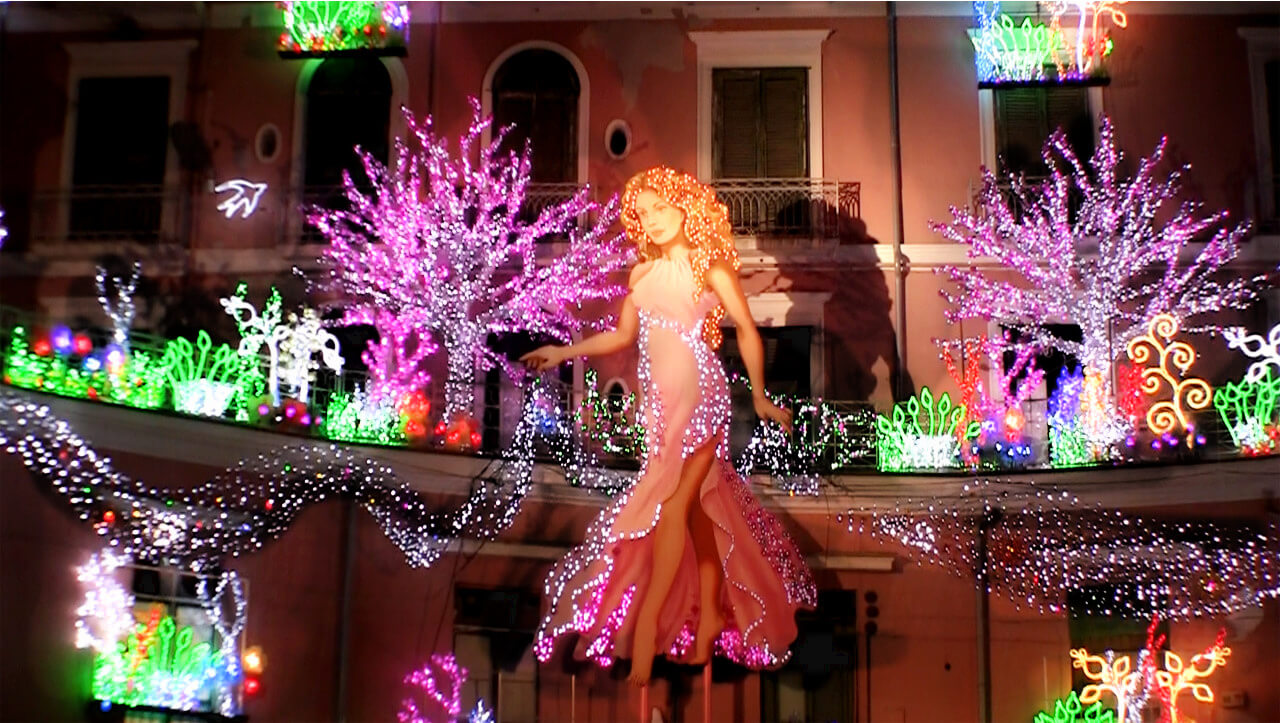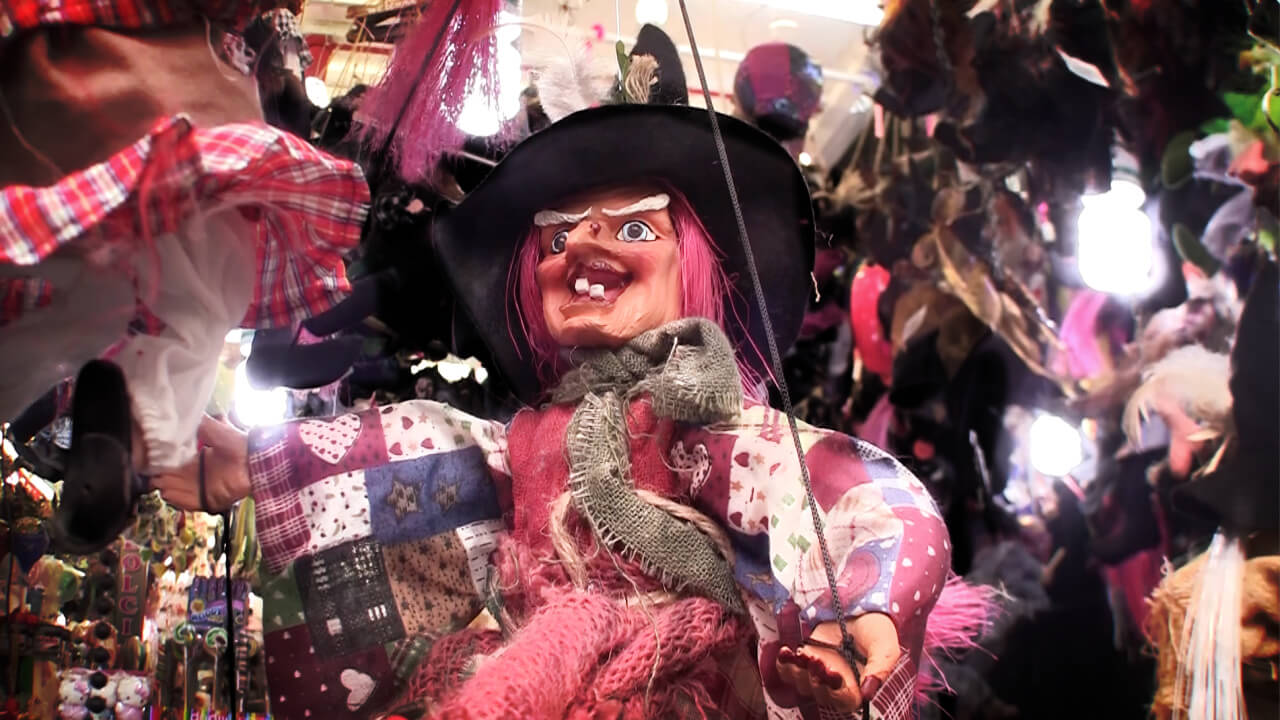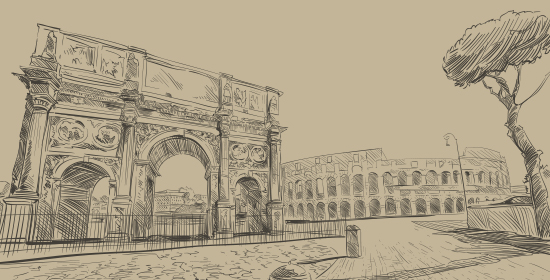Italian Christmas Traditions to Enjoy in Italy

Buon giorno and welcome to Stefano’s RomeCabs, Rome’s leading company for Rome tours and transfers.
Christmas time in Italy is one of the most joyful occasions celebrating traditions, folklore, and delicious treats. If you plan to visit Italy during the Christmas holiday, don’t miss these wonderful Italian Christmas traditions to enjoy in Italy.
We also included an accompanying video featuring most of the Italian Christmas traditions mentioned in this article.
Italian Christmas Traditions to Enjoy in Italy
(WATCH: Italian Christmas Traditions to Enjoy in Italy Video)
CHRISTMAS DECORATIONS THROUHOUT ITALY
(Italian cities and towns light up!)

In Italy Christmas decorations vary from subtle to a magical Christmas wonderland.
Each city, town and village is different and they change from year to year, but you can expect to see Christmas trees, mangers, wreaths, Babbo Natale (Santa Claus), and lights!

Most cities officially light up for Christmas on December 8 (The feast of the Immaculate Conception). However, you will find that locals, merchants, and streets already decorates by late November.
CHRISTMAS MARKETS in ITALY

Christmas Markets are a treat all over the world that celebrates Christmas, and Italy it’s no exception. From big cities to small towns, Christmas Markets offer not only artisan Christmas ornaments, but also gifts and locally produced foods and specialties.
If you plan to visit Italy during the Christmas season, check to see if the towns you plan to visit will host Christmas Markets – you never know what treasures you’ll discover!
WATCH: Christmas Market in Arezzo (Tuscany)
LA BEFANA
(The Good Witch of Christmas)
The of the most unique among Italian Christmas Traditions is La Befana: an old woman that looks more like a broomstick riding witch of Halloween than a Christmas character.
La Befana derives her name from the Feast of Epiphany, and she visits all the children in Italy on the eve of the Feast of Epiphany and fills their socks with candy and presents if they are good, or lumps of coal if they’ve been naughty.

According to legend, Befana was an old woman who lived alone during biblical times when she encountered the 3 Wise Men. They asked her for directions to where the Son of God was as they were following his star in the sky. She did not know, but they invited her to come with them to deliver presents to the Christ Child. Embarrassed in the presence of the wealthy magi considering her lowly status and poverty with no gift to give to the Child Christ, she refused.
Later, when she changed her mind and with a humble toy in hand she set out to search for the 3 Wise Men to bring her gift to the Christ Child but she was unable to find them. To this day, she searches for the Christ Child and delivers candy and toys to all the good children in hopes that perhaps maybe one of them may be the Christ Child she is searching for.
WATCH: La Befana Festival - Italian Christmas Traditions to Enjoy in Italy
A popular rhyme goes something like this:
La Befana vien di notte
con le scarpe tutte rotte
col cappello alla romana
viva viva la Befana
...
The Befana comes by night
with worn out shoes
and dressed like a Roman,
Long live La Befana!
Each year for a few days be Epiphany in early January, the Befana Festival is held in the small village of Urbania (near Urbino, in the le Marche region) that attracts many families from all over Italy (and some from abroad) who come to celebrate this unique Italian tradition.
LIVING NATIVITIES
(takes you back in time)

Nativity scenes are nothing new at Christmas time, except in Italy there are entire festivals dedicated to the Nativity scene – except that they are Living Nativity Scenes (Presepi Viventi, in Italian).
The ORIGINAL living nativity was first staged by Saint Francis of Assisi in 1223 in the village of Greccio where he set up a manger inside a hermitage cave with hay, an ox and a donkey. He invited villagers to see his living nativity while he preached about Jesus.
WATCH: Living Nativity event in central Italy - Italian Christmas Traditions to enjoy in Italy
Entire sections of towns or remote areas are transformed into biblical Bethlehem settings or Medieval villages re-enacted by actual people (mostly local residents) in period clothing, historic characters, craftsmen, animals, and music transporting you back in Time. Even the manger scene include a live Mary, Joseph and baby Jesus, surrounded by live donkeys, cows, and other barn animals.
Living Nativities are held throughout Italy in many towns usually between December 26 through eve of Epiphany. Some Living Nativities are held even earlier for public enjoyment since so many towns old theirs on the same dates. Of all Italian Christmas Traditions that are most entertaining and not to be missed are the Living Nativities.
While some Living Nativities in Italy are set in bibilical times, many reflect Italy's long medieval history and the Living Nativity re-enactment is organized in a medieval setting usually in Medieval towns, villages or through Medieval ruins such as inside the ghost town of Monterano in the video above.
Recently a Living Nativity event was held at the medeival Bracciano Castle (Castello Orsini-Odescalchi) as in the video below. If you happen to be visiting Italy between Christmas and early January don't miss these amazing Living Nativities in Italy, they are among the most joyful holiday celebrations and loved by the Italians.
WATCH: Living Nativity event at Bracciano Castle - Italian Christmas Traditions to enjoy in Italy
PAPAL CHRISTMAS MESSAGE AND BLESSING:
URBI ET ORBI

At noon on Christmas day, the Pope delivers his annual Christmas message and apostolic blessing “Urbi et Orbi” (“to the City of Rome and to the World”) from the central loggia of St Peter’s Basilica to all gathered in St Peter’s Square.
ZAMPOGNARI
(Traditional bagpipe carolers)

Among the most traditional Christmas “carolers” in Italy are the Zampognari (bagpipe players).
Originally shepherds from remote areas of Italy’s mountainous Abruzzo region (according to tradition), the zampognari are named after their instrument: the zampogna – bagpipes made from goat hide or sheepskin, and pifferi made of wood. The zampognari wear the traditional folk dress of the region.
During Christmas time, you can come across Zampognari playing traditional folk and Christmas melodies around Christmas markets, in the streets, in open squares, and anywhere Christmas traditions are celebrated. If you do come across bagpipe players dressed like shepherds, stop and listen to the Zampognari whose joyful melodies extol the deep traditions and beauty of Italy.
DELICIOUS CHRISTMAS TREATS

Italian Christmas traditions would not be the same without Christmas treats! Some of the most popular and delicious Christmas treats that you can easily find all over in markets and specialty shops in Italy are Panettone, Panforte, and Torrone.
Panettone is a soft dome-shaped sweet bread that comes in a variety from simple, to raisin-filled, candied fruit, chocolate, or other flavorful variants.
Paneforte (“strong bread”) is a 13th-century Medieval traditional dense aromatic cake comprised of spiced fruit, nuts, and sweetened with honey. The spices of Paneforte are characteristic of Christmas: cinnamon, cloves, nutmeg, and cardamom.
Torrone is a popular Christmas nougat that comes in both soft and hard varieties. The white torrone that is both soft and hard is traditionally made with egg whites, honey, sugar and nuts (almonds, walnuts or hazelnuts). You can also enjoy chocolate torrone filled with nuts.
Christmas treats are usually available and sold only around Christmas time – although you can find Panettone and Torrone in some specialty shops all year round. So be sure to grab some if you will be in Italy during the Christmas holidays and enjoy these delicious traditional Italian treats.
If you book our Rome in A Day Tour (or any Rome day tours) during Christmas time, you too can enjoy these treats and see the annual Nativity Scene in Saint Peter's Square.
Thank you for reading our Italian Christmas Traditions to Enjoy in Italy article and watching our video. We look forward to seeing you in Italy!
For more information about our private Italy tours, shore excursions, airport and Civitavecchia transfers, please visit our Stefano's RomeCabs website.
We look forward to seeing you soon in Italy!
Kind Regards,
Stefano’s RomeCabs Team
